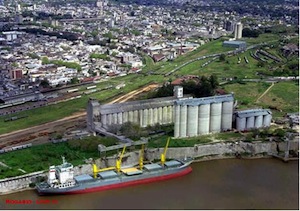Investment needed for Rosario to grow as FV port says Murchison
Since it began handling finished vehicle volumes last year, the Argentine port of Rosario has been looking to capture more business from the sector. With GM set up in the region at Cordoba and optimistic about the investments being made at the port, an alternative for automotive shipments to the port of Zárate at Terminal Puerto Rosario (TPR) looks to have potential. There is also demand for a port able to serve the central region of Argentina.
However, according to Roberto Murchison, president of the Murchison Group, the investment needed to accommodate the volumes required to make it worthwhile would be significant.
Furthermore, he is unsure whether deep sea vessels could be persuaded to move there, particularly since finished vehicles would then have to be moved by road to Buenos Aires, the main market concentration in Argentina.
When the initial consignment of vehicles – consisting of 2,200 GM units including Chevrolet Captiva, Cruze and Spark models – was made last year, it was essentially a pilot operation to see whether the terminal would be able to cope with this type of traffic. Things did not go exactly to plan: the operation was delayed a day following difficulties in providing the necessary tug support by TPR, which blamed the initial failure on bureaucratic trade unions. The situation almost resulted in the vessel being diverted to Argentina's main finished vehicles handling facility at the port of Zárate.
The port was threatened with disruption in April this year when unions threatened a general strike.
According to Murchison, anybody starting a new business in Rosario would have to look seriously at how they would cost effectively move new vehicles between Buenos Aires and the port, although whether money could be made from shifting the automotive business there is heavily dependent on who would invest in the necessary infrastructure, he added. When Murchison analysed the use of Rosario, the figures simply did not stack up because of the infrastructure question. Nevertheless, if somebody else were to assume the infrastructure cost, then he said the company might have another look at using the port.
At Zárate, Murchison has 150 hectares set aside for handling finished vehicles, whereas Rosario only has 70 hectares.
At the same time, the number of new vehicles handled at the specialist terminal in Zárate has declined in respect of last year. Traditionally, the terminal has had more imports (60%) than exports (40%); however, this year there has been parity between the two. Despite this, Murchison is expanding the holding area for cars, given that the company remains confident for prospects in the medium to long-term.






